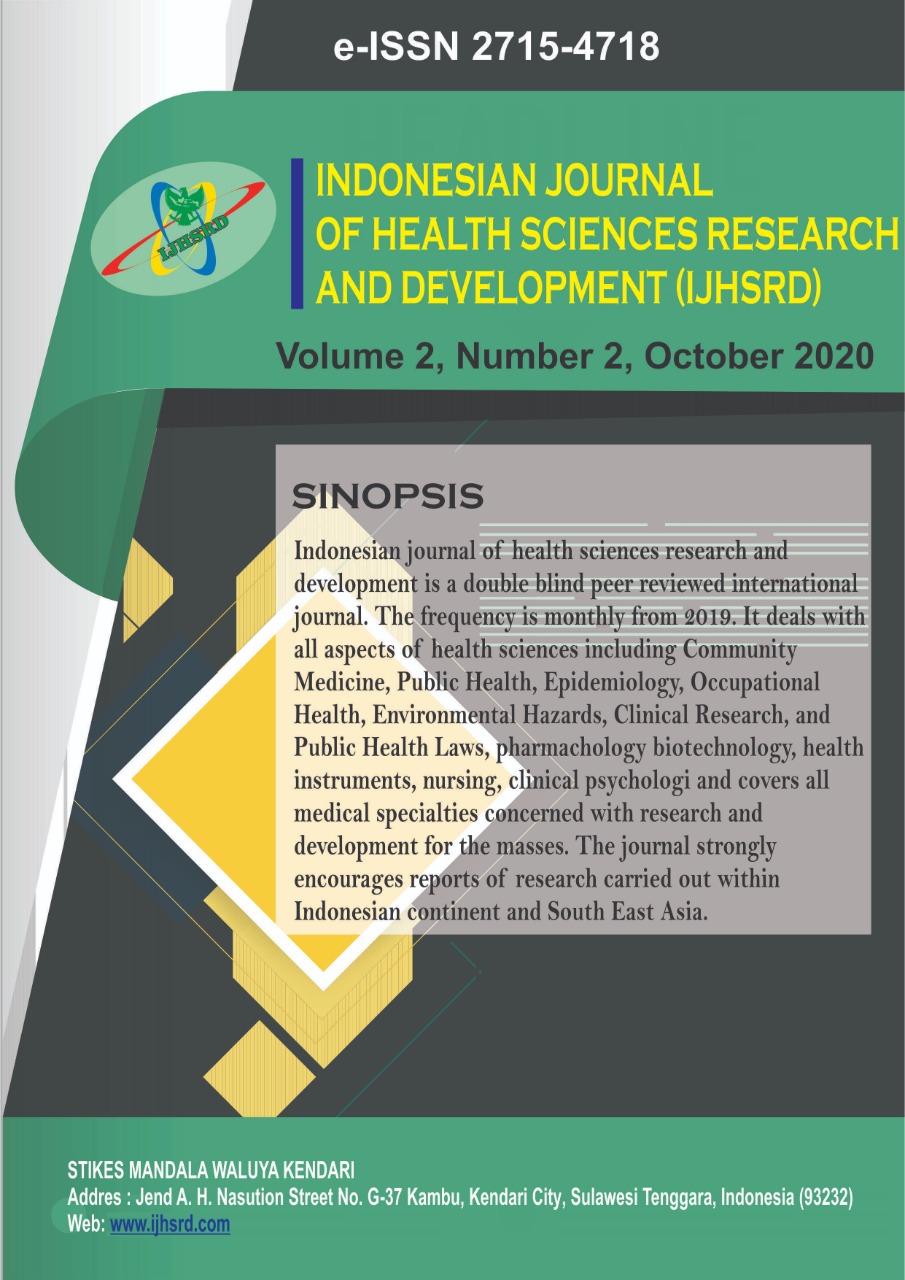Main Article Content
Abstract
Background: Child psychological development is an important part of child welfare indicators. The development of child psychology determines the mental readiness of children, one of the problems in children's psychological development is sibling rivalry, which is a sense of competition due to the birth of a younger sibling, causing competition to get attention from their parents. Based on the initial survey, out of 8 mothers with children aged 1-5 years said that since the arrival of their new siblings, their first children often fuss and cry for no reason and want to always be noticed, sometimes even want to hit and injure their younger siblings. This study aims to determine the factors associated with the incidence of sibling rivalry in children aged 1-5 years in Labibia village, Mandonga sub-district, Kendari city.
Methods: The type of study was cross sectional design method. The sample in this study were all mothers who had two or more children aged 1-5 years in Labibia Village, Mandonga District, namely 39 mothers. The sampling technique used simple random sampling, the method of analysis used the Chi Square test.
Result: The results of this study, showed that there was a moderate relationship between knowledge and the incidence of sibling rivalry (X2 count = 6.955> the value of X2 table = 2.705) and the value of phi (?) = 0.422, there was a moderate relationship between parenting styles and the incidence of sibling rivalry (X2 Count = 8,269> the value of X2 Table = 2.705) and the value of phi (?) = 0.460 and there is a strong relationship between attitude and the incidence of sibling rivalry (X2 count = 18.373> value of X2 Table = 2.705) and the value of phi (?) = 0.686.
Conclusion: It is hoped that the parents further increase knowledge and awareness of the behaviors given and understanding of good parenting, with a good attitude will have a positive impact on their children.
Keywords
Article Details

This work is licensed under a Creative Commons Attribution-ShareAlike 4.0 International License.
References
- Ministry of Health Republic of Indonesia. Health Data and Information Window Bulletin. Jakarta?: Ministry of Health Republic of Indonesia; 2011.
- McNerney, Usner, J. Sibling Rivalry in Degree and Dimensions Across the Lifespan. J Sci Wcp Muohio Edu [Internet]. 2001; Available from: www.usnerjm@muohio.edu
- Woolfson R. Sibling Competition: Encouraging Children to Be Friends. Jkt Erlangga. 2004;(Translation of Fransiscus Rudianjo).
- Maghfuroh. The relationship between parents’ attitudes and the incidence of sibling rivalry in children aged 3-5 years in Brengkok-Brondong-Lamongan Village. Sci J Health Sci. 2012;X (1) hal 9-13.
- Wawan. A, Dwi M. Knowledge, Attitudes and Human Behavior. Yogyakarta?: Nuha medika; 2011.
- Purnamasari D, Bakara, Derision Marsinova, Sutriyanti Y. Relationship between Mother’s Knowledge Level and Sibling Rivalry Incidence at Toddler Age. Health J. 2014;V(2), Hal 182-188.
- Rofi’ah S. Parenting Patterns for parents with the incidence of sibling rivalry in children aged 1-5 years. J Midwifery Sci. 2013;(1 (3)):152–9.
- Rebar D, Bailey NW, Jarrett BJM, Kilner RM. An evolutionary switch from sibling rivalry to sibling cooperation, caused by a sustained loss of parental care. Proc Natl Acad Sci. 2020 Feb 4;117(5):2544–50.
- Smith AL, Atwater DZ, Callaway RM. Early Sibling Conflict May Ultimately Benefit the Family. Am Nat. 2019 Oct;194(4):482–7.
- Nofitasari A, Islaeli, Pratiwi DS, Said A, Risky S, Lestari SA. Knowledge and Attitude of Primary School Teacher on the Practice of Selected Food Students Containing Additional Hazardous Foodstuffs in Sdn 01 Poasia Kota Kendari. Indian J Public Health Res Dev. 2018;9(6):399.
